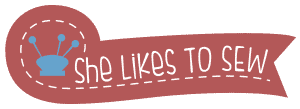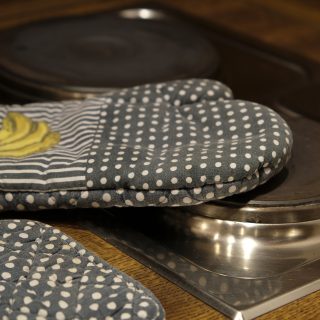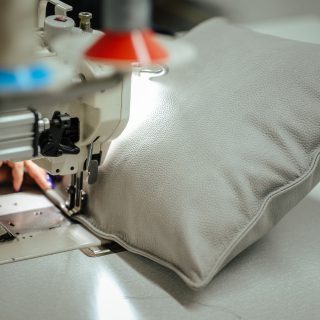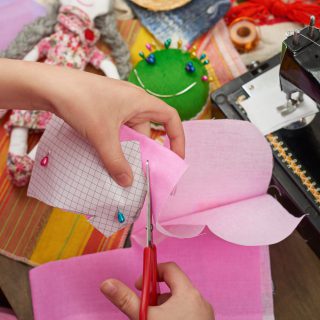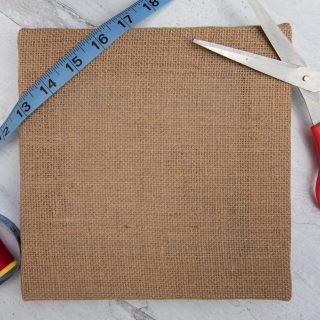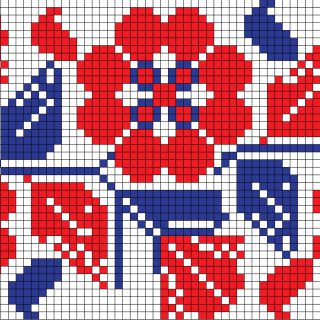A house is not a home if there are no pillows and cushions thrown around to create an atmosphere of coziness. A throw blanket with a couple of soft, cuddly cushions is all you need for a satisfying winter’s day. But buying pillows and pretty-looking pillowcases in stores can be unnecessarily expensive, especially if you are trying to follow the latest trends in home decor.
This is exactly why many people have decided to start making their own pillows, myself included. If you walk into my living room or bedroom, you’ll find at least fifteen soft, colorful cushions thrown around over the sofa and my bed. These are mostly products of my de-stressing sewing quick and easy sewing projects, an activity I would strongly recommend to everyone.
Hand-sewn pillows also make for a great gift for birthdays and holidays, so you might want to consider it an option, as making a pillow doesn’t cost much. It takes around one hour to make one once you become practiced.
Hand sewing a pillow may seem complicated at first sight: preparing the material, stuffing the pillow, making a pillowcase, etc. But it’s actually very simple. You don’t even have to have a sewing machine!
In this post, I will take you through the ways of sewing a pillow by yourself by hand. I will try to make the tutorial as comprehensive as possible so that you can feel confident about assembling your pillow and enjoy the process as much as possible.
How to Sew a Pillow by Hand – Step-by-Step Guide
Before we dive into the methods and techniques of hand sewing your perfect pillow, we need to talk about preparation.
Before beginning any sewing project, it’s important to have all of your tools and materials ready, as it can get quite messy if something is missing, and you need to find it in the middle of sewing.
This is why all sewists pay special attention to the preparation process, and I suggest you do so as well.
So, let’s go through the basic necessities for pillow making.
What do I Need to Hand Sew a Pillow?
Here are the most important things to have for sewing a pillow:
- Thread. Sewing without a thread is basically impossible. I recommend you to buy multi-colored thread that can easily be combined with the material of any color.
- Needles. Along with thread, needles are another sewing essential, as it’s close to impossible to finish a project without them. By now you may have your preferred brand and type of needles, but if you don’t, I suggest you try these by Singer.
- Pins. These are usually necessary during sewing, and you would commonly use them to hold and/or label the fabric before you start sewing. I suggest to everyone to buy multiple packs of these, as you can never have too much, and larger or simultaneous sewing projects can require having more than 100 pins in use at the same time.
- Sharp scissors. A pair of sharp scissors is definitely a must when it comes to sewing, if you cut your fabric and thread with blunt scissors, it can result in thread fraying.
- Sewing chalk, marker, or plain pencil. This is another item you’ll often use, as you need to mark the material before cutting and sewing.
- Pillowcase fabric. You can use any kind of material for the casing, but if we consider that you’ll probably want to put your face on the pillow at some point, you surely want a type of fabric that won’t irritate your skin. This leaves us with natural fabrics such as cotton and linen. Compared to their synthetic counterparts, these two also have the best prints and patterns.
- Pillow stuffing. Finally, there can be no pillow without stuffing. There are many options to choose from, such as polyester filler, memory foam filler, or eco-friendly fillers.
Once you’ve ticked off all of the necessities from above, you can move to the next stage of making your perfect pillow: cutting, aligning, pinning, and finally sewing.
Let’s take a closer look into the exact steps you need to take to make a pillow by hand.
Hand Sewing a Pillow
Choose the Exterior
First, take a look at your fabric and think about which side you want to be the exterior of your pillow. When you’re certain about this, take the fabric and lay it down with the “exterior side” facing up.
Fold and Cut the Fabric
Then, fold it in half, making sure that the side chosen as your exterior is on the inside now. While having it folded up, measure around 1-foot square, mark the edges with the sewing chalk or marker, and cut it out of the fabric using a sharp pair of scissors. Make the cuts as clean as possible, as you want the fabric edges to remain as “healthy” as possible.
Sew the Pouch
Once you’ve got the fabric ready, you can start sewing. Pick a corner next to the fold and sew at a perpendicular angle along the edge. Make sure not to place the stitches too close to the edge, as it will be difficult to continue with the sewing. You want them to be small and fairly close to the edge, but not too much.
Important!
Make sure to put enough thread through the needle if you don’t feel confident re-threading it during the sewing process. But if you don’t put enough, it’s no big deal, just tie a knot once you reach the end of the thread and re-thread your needle.
As you sew, make sure to go perpendicularly over both edges until you reach the point where the two fabric sides are sewn closed. One side should be folded on the inside, and the other should be an open edge. Simply put, this should look like a pouch.
Stuff the Pouch
Now, flip the pouch so that the exterior part is now inside. Take the pillow stuffing and gently fill in the open hole.
If you have opted in for cotton outer material and stuffing, you will notice their benefits at this step already. First, the filling and maneuvering of the fabric and the stuffing is much smoother when you work with cotton. Secondly, you will notice that your pillow is filling up to become a comfortable, compact, well-designed cushion.
Another important thing is to not fill your pillow too much! This can lead to ripping and damage, the stitches may open up, and nobody wants to clean up that mess.
Also, you want to make a pillow that looks like it’s been professionally made, so make sure that your pouch is well-stuffed in the corners as well. Once you get a hold of this, you can sew the open end of the pillow. If you need additional advice on how to do that, or you’d like to secure the closing with a sewing machine, check out one of my previous tutorials – How to close a pillow with a sewing machine. Otherwise, use any stitch you prefer and hand sew the opening.
Attention to Details
Keep in mind that the stitches will be tighter if they are smaller and that you should also sew gently, as you don’t want the other seams to open up. When you’re done with the opening, make another pass and re-sew the stitches that have been done last. That way, you’re ensuring that the previously open side is fully secured and unlikely to open up after stuffing.
Finishing Touches
When you’re done with re-sewing the last stitches, cut the thread, and make the final knot. The know tied should be pretty tight, and if there is any excess fabric or thread around it, cut it off gently and carefully.
That’s it. Your pillow is ready to join the throw blanket on the sofa!
Before you leave, here’s another way to make a proper pillow.
Hand Sewing a Closed Pillow
All of the steps are the same until you reach the closing of the pillow. Before closing, serge the edges on the bottom side, making sure that the material doesn’t fray.
After serging, make a stitch line of some ¼ (or a bit more) of an inch from the bottom fabric edges. This will give you a straightforward guideline for making some half of an inch seam allowance.
Now, start on the right side of the pillow and make a small stitch through one side of the fabric. Then with a separate stitch go through one side of the material, and pass through the opposite end by using a separate stitch. On the bottom side of the pillow, repeat this process as many times as needed, moving from the right to the left.
When you’re on the left side of your pillow, make a tight knot as a finishing touch. This kind of stitching will give your pillow a more appealing look, as it will look as if you’ve stitched it with a machine.
The Method of Making a Burrito Pillowcase
Another method for making a pillow is the burrito pillowcase method. I would recommend this method to anyone who is already at least somewhat experienced in sewing. The reason is that you need some experience with folding, cutting, measuring, aligning (much more than actual sewing). If not, this method can take up more time, as you might make more mistakes and might need to go back several steps.
The first step here is to place the cuff fabric to face upwards and put the pillowcase fabric, which should also face up, on top of it.
The raw edges should be properly aligned so that you can fold the strip, ensuring that these raw edges remain aligned with the raw edges placed on the top of other fabrics.
Start rolling at the bottom by gradually making a burrito of the main material, all the way to the cuff material middle part. Now, bring the cuff material up over the burrito by holding its bottom part. Keep checking whether the raw edges are properly aligned and if needed, pin them so that they remain in place while the accent strip is trapped.
You can start stitching the edges when you’re sure that everything is secured in place. Make sure to leave a seam allowance of at least ¼ of an inch.
Then, hold the main material on the inner side of the burrito. Pull it out gently all the way until it’s fully unrolled.
Now, flatten it all out and make sure that there are no wrinkles left. At the same time, ensure that the accent strip is going in the right direction. Also, ensure its flatness.
When this is completed, you can cut the pillowcase. Measure from the top cuff to the end on the opposite side some 28 inches. Cut the pillowcase some 20 inches in width so that the result would be 40 inches. Of course, if you prefer to work with different sizes, that’s up to you. These are the measurements that I personally prefer to use, as these are the regular pillow sizes.
Now, there are a couple of ways to finish the burrito pillowcase. I will list a few options, and you can choose the one you find the simplest for you.
The first method is the serger method. This means folding the pillowcase in half in the middle and serging its raw edges. The raw edges are located on the right side and on the top (if you did everything right in the previous steps, this should be the case). Then, flip the pillowcase’s right side out and press.
The other method is called French seams. This is also a good choice and not much more complicated than the previous one. You need to fold the pillowcase in half again, and the right sides should be facing out. Using the seam allowance of ¼ of an inch, you should stitch the right sides together. The stitch should go along the raw edges. When you’re done stitching, cut the edges down to ¼ of an inch. The next step is to flip the pillowcase and ensure poking through its corners to give it a more professional look and to reach the full pillow shape before the final pressing.
Finally, sew a seam of approximately ½ of an inch. Raw edges can be trapped, but they don’t have to be; it’s your call. This doesn’t change anything in the practical sense but rather in the aesthetic. This should give your edges a more defined look. Now, flip the pillowcase out and poke the corners out. Do this gently so that you don’t damage the stitches. Then, do the final pressing. After that, you can start stuffing the pillow.
Application of Images and Designs on Your Pillow
As I mentioned before, pillows are important decorative elements of any home, so you may want to apply some additional decor on them, such as images or designs. Applying additional decoration elements will give your pillows a more authentic look, as you can choose to apply virtually anything for your pillow decoration.
Once you’ve chosen what you want to apply on the pillow, and on which side, you should turn this side to face downwards.
Underneath should be the other plain side of this pillow. Both sides should be well aligned (cut the fabric where necessary). Use pins to stick the sides together – it’s best if you stick 4 pins on each side, around ½ of an inch from the edge. You can start sewing when you have both pieces pinned together. Of course, include the design/applique of your choice and sew it onto the desired side of the pillow.
Some Additional Tips
Before we finish this tutorial, I also wanted to give you a couple of additional pieces of advice.
First, when hand sewing, you want to protect your fingers. It’s much easier to hurt them with a needle in your hand compared to when you’re working with a sewing machine. So please, consider using a thimble to keep your fingers safe. They are designed to protect you from accidentally pricking your finger.
Another tip is to wash and dry the fabric before sewing. This can be of particular importance if you suspect that the fabric might shrink after washing. This is often the case with 100% cotton, so please consider washing and drying your fabric before sewing to avoid unpleasant surprises.
Final Word
We’ve reached the end of this tutorial. Congratulations, you have made your hand-sewn pillow. I hope it was fun and effortless.
For more tutorials, please do follow the how-to page on my website, and discover how to sew a beret hat (another amazing gift and personal fashion item), how to alter your jeans waist to be smaller (in case you’ve lost weight, or inherited a pair of pants that are too big), or how to make fabric rosebuds (this might also be an excellent addition to your hand sewn pillow!).
Last update on 2025-07-03 / Affiliate links / Images from Amazon Product Advertising API
